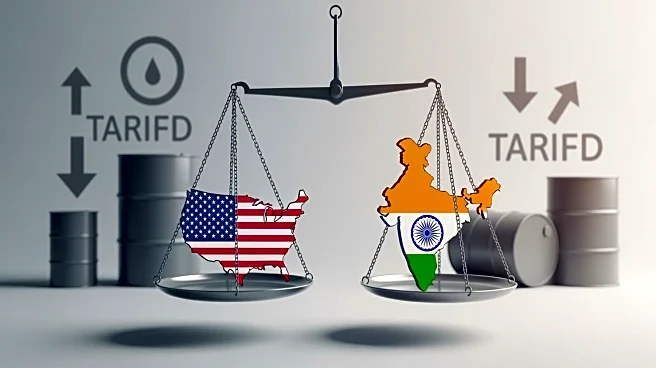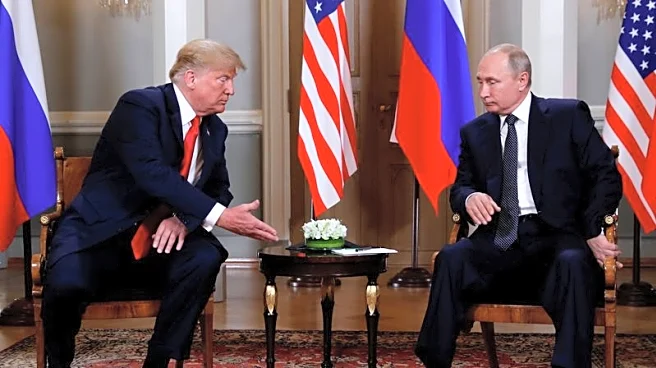What's Happening?
The United States and India are reportedly nearing a trade agreement that could see a reduction in tariffs on Indian imports from 50% to 15-16%. This development follows India's decision to cut its reliance
on Russian oil purchases, a move that was previously met with a 25% tariff by the U.S. as a punitive measure. The trade talks are focusing on energy and agriculture, with India potentially easing restrictions on U.S. corn and soymeal imports to meet rising domestic demand. Discussions are also advancing on allowing non-GM soymeal imports for human and livestock consumption, although tariff reductions for dairy products remain uncertain. President Trump has indicated that Indian Prime Minister Narendra Modi assured him of India's commitment to limit oil purchases from Russia.
Why It's Important?
The potential reduction in tariffs signifies a significant shift in U.S.-India trade relations, which could bolster economic ties between the two nations. For the U.S., easing tariffs could enhance export opportunities for American agricultural products, particularly corn and soymeal, benefiting U.S. farmers and related industries. For India, diversifying oil imports and increasing agricultural imports could stabilize domestic markets and support sectors like poultry feed and dairy. The move also reflects geopolitical considerations, as reducing reliance on Russian oil aligns with U.S. interests in curbing support for Russia amid the ongoing conflict in Ukraine. The trade agreement could further strengthen bilateral relations and economic cooperation between the U.S. and India.
What's Next?
The finalization of the trade agreement is anticipated to be announced at the ASEAN Summit, with India aiming for a November 2025 conclusion. Both countries have previously missed deadlines, indicating potential challenges in negotiations. Stakeholders in agriculture and energy sectors will be closely monitoring developments, as changes in tariffs and import policies could impact market dynamics. The Indian government is expected to informally advise state-run oil companies to diversify crude sourcing towards the U.S., although no formal announcement has been made. The outcome of these negotiations could set a precedent for future trade deals and influence global trade patterns.
Beyond the Headlines
The trade negotiations highlight the complex interplay between economic policy and geopolitical strategy. India's decision to reduce Russian oil imports underlines the influence of international relations on domestic policy decisions. The potential easing of agricultural import restrictions raises questions about the impact on local farmers and food security. Additionally, the focus on non-GM soymeal imports reflects ongoing debates about genetically modified organisms and consumer preferences. The evolving trade dynamics could also affect regional alliances and economic partnerships, as countries navigate the balance between economic interests and political alignments.












